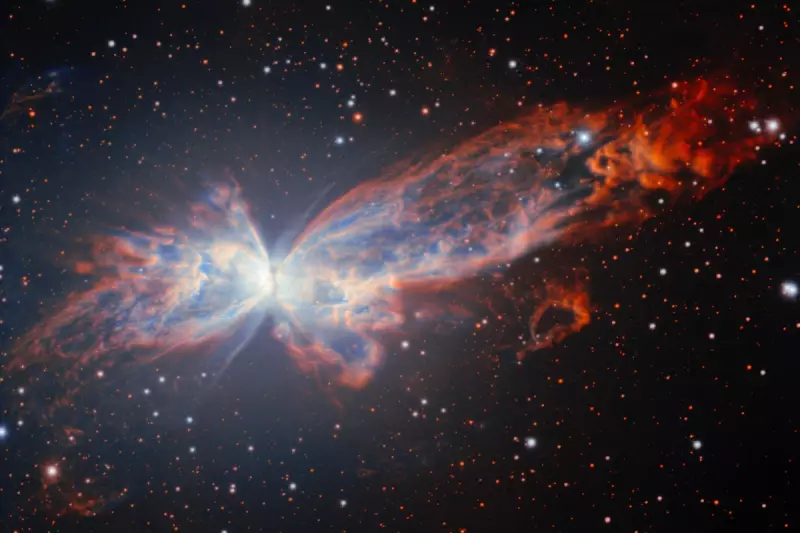
In an astronomical triumph, a powerful telescope located in the Chilean Andes has unveiled a spectacular new portrait of a deep-space butterfly, showcasing the grandeur of our universe.
A Celestial Masterpiece Unveiled
The Gemini South telescope in Chile successfully captured this magnificent sight last month, with the National Science Foundation’s NoirLab officially releasing the image to the public on Wednesday 26 November 2025. The subject, the aptly named Butterfly Nebula, resides an astonishing 2,500 to 3,800 light-years from Earth within the constellation of Scorpius. Given that a single light-year equates to six trillion miles, the sheer distance involved is almost incomprehensible.
The Science Behind the Cosmic Wings
This stunning formation is classified as a bipolar nebula. At its very core lies a white dwarf star, the remnant of a star that has exhausted its nuclear fuel. Long ago, this aging star shed its outer layers of gas into the void of space.
These discarded gases now form the vast, billowing wings that give the nebula its butterfly-like appearance. The intense heat and radiation still emanating from the central white dwarf cause this surrounding gas to glow, illuminating the structure in breathtaking detail against the dark cosmic canvas.
A Collaborative Discovery for a Special Anniversary
Adding a heartening human element to this scientific achievement, the celestial target was not chosen by senior astronomers alone. To mark the 25th anniversary of the International Gemini Observatory's operation, schoolchildren in Chile were given the honour of selecting this particular astronomical wonder for imaging. This initiative beautifully bridges the gap between advanced scientific research and inspiring the next generation of stargazers.
The resulting image is more than just a pretty picture; it is a profound reminder of the dynamic and ever-changing life cycle of stars, offering invaluable insights into the final stages of stellar evolution.





